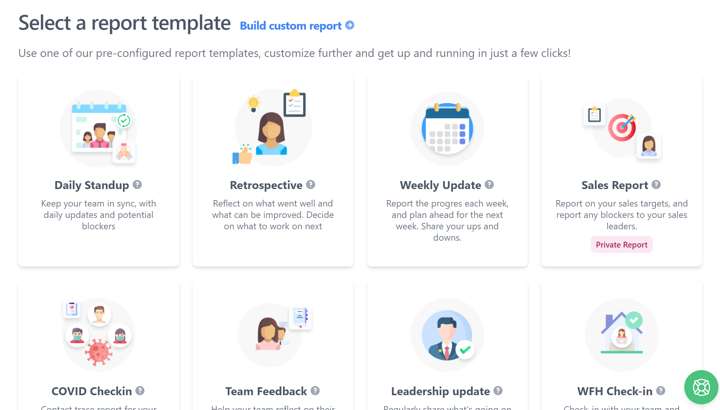
Here at ScrumGenius, our goal is to help our customers take control of their meetings and boost communication, productivity and morale. Now that we’ve discussed daily standups and weekly status reports, let’s talk about a longer frame style of meeting: sprint retrospective meetings.
What Are Sprint Retrospectives?
Sprint retrospectives are a crucial part of agile organization as they allow teams to look back on progress and look forward to future tasks. At the end of each sprint, which usually lasts anywhere from two weeks to a month depending on the team’s needs, teams will come together to discuss the work that has been completed. This allows for a focus on the acceleration of tasks and specific chunks of a project.
The origins of the sprint retrospective are much the same as those of the daily standup. Scrum first came into the public eye with a 1986 paper by Takeuchi and Nonaka titled “The New New Product Development Game”. But the idea of sprint retrospectives was first described by Alistair Cockburn in 1997 as an act of reflection; then, in 2001, this reflection became one of the principles of the Manifesto for Agile Software Development.
The word “retrospective” was first used in a 2003 paper titled “What is Scrum?” to refer to a three-hour time-boxed meeting in which team members were supposed to revise the development process to make it run smoother.
How Can Agile Sprint Retrospectives Help Team Managers
Agile sprint retrospectives can have many huge benefits for your team. First and foremost, they put the focus on team performance and progress, allowing you to better keep an eye on workflow.
Furthermore, they can also help format trust within your team as they allow for more open communication between team members and managers, thus creating a greater sense of transparency. This also means greater transparency between team members, making communication and collaboration even easier.
These benefits leave agile sprint retrospectives with three main functions: productivity-boosting, transparency-boosting and morale-boosting. Depending on which function you value the most, this can also affect the sprint retrospective format that is best for you.
What Are The Different Sprint Retrospective Formats?
There are many different sprint formats you can use for your sprint meetings. Here are three of them.
"Start-Stop-Continue" Retrospectives
The premise of this one is simple: you discuss new tasks you need to start in the new retrospective, finished tasks to stop, and tasks to continue. This type of retrospective is good for all kinds of project teams (especially software development teams), program reviews and performance evaluations.
"What Went Well? What Didn’t?" Retrospectives
This type of retrospective is based on grouping tasks completed in the sprint by whether they were or weren’t effective, requiring team members to work together to discuss how the sprint went. These retrospectives are good for teams that want to focus on their strengths and weaknesses.
"4L’s" Retrospectives
The 4 L’s in these retrospectives stand for Liked, Learned, Lacked, & Longed For. This puts emphasis on elements the team enjoyed, new things learned, ways to improve the sprint and blockers they ran into.
Common Issues with Sprint Retrospective Meetings
Though sprint retrospective meetings can be incredibly helpful for you and your team, there are many issues you can run into that can slow down your progress. Here’s a quick list of some of the most common ones.
Your Sprints Aren’t Focused
One of the biggest problems with running sprints is that if your tasks aren’t focused, you can massively bring down productivity and slow down workflow. Make sure you know exactly what work needs to be done for a given sprint—and then make sure you talk about those things in your retrospectives, too.
Your Retrospectives Aren’t Actionable
The role of a sprint retrospective is to go over the tasks completed in the sprint and prepare for the next one. But if your sprint doesn’t leave you with actionable items to discuss, it can be hard to find new goals for the next sprint to talk about. Just like making sure your sprints are focused, you need to make sure you have actionable results to discuss in your retrospectives.
Momentum Isn’t Kept Up
The longer length of sprint retrospectives in comparison to, say, daily standup meetings or weekly status meetings, can make it harder for team members to keep up morale. You may need to customize the length of your sprints or add in another form of check-in to see what works best for your team.
Lack of Trust Within the Team
One of the most fundamental things to the smooth working of the team is trust. If your team members don’t trust each other or have other conflict issues, they may be less open to sharing their tasks with others or collaborating with them.
Make sure you have a good base of trust between both your team members and between you and your team members in order to foster better retrospectives.
How to Run Your Best Agile Retrospectives
Now that we’ve gone over common problems with sprints and sprint retrospectives, let’s discuss more ways to run your best possible agile retrospectives.
Prepare For Your Retrospectives
Preparation is key to having both your sprints and sprint retrospectives running smoothly. For instance, keeping records during your sprints can help you stay on task and know what to discuss during your retrospectives. For managers, it can also help you keep an eye on your team’s productivity and progress so you can keep workflow running smoothly.
There are a number of easy ways to do this. You can simply utilize a shared document to keep track of your tasks and progress, or help digitize your records with a project management platform such as Clubhouse or Trello. You could also help automate your sprints and retrospectives with an asynchronous platform such as ScrumGenius—more on that later.

Keep Close Communication
Open communication between both team members and team members and managers is one of the most vital parts to running successful agile sprints. Make sure team members communicate any problems they have encountered during retrospectives and leave your meetings open for collaboration. There are many communication tools you can use to boost this communication (e.g. Slack and Microsoft Teams).
Tailor Sprint Length and Frequency
One of the best parts about agile sprints is that they can be easily customizable to fit different kinds of teams. Instead of being one-size-fits-all, you may have to do some testing to find out what length and frequency works best for you. Some teams work best by running sprints of around two weeks, and others vary lengths based on the tasks they need to complete.
Length is another important variable. The Scrum Guide suggests that for every week included in your sprint, you should allocate 45 minutes for your retrospective meeting, with a maximum of three hours. Try different lengths to find out which one works best for you.
Theme Your Sprints
Another way to keep your sprints focused and keep retrospectives on task is to “theme” the objectives of your sprints. While this may sound unhelpful, we simply mean to group similar tasks together; for instance, you could run a “research and development” sprint, with the goal to focus on writing or creation for the next one. Instead of cobbling unrelated tasks together, try to group similar tasks together in order to keep up momentum and make your goals clearer.
Automating Sprint Retrospectives with ScrumGenius
One of the easiest ways to run sprint retrospectives is to automate them with an asynchronous tool like ScrumGenius. ScrumGenius lets you customize the length at time frame (including bi-weekly, monthly and ad-hoc options) and questions, so you can follow whatever retrospective format works best for you or even create your own.

We also have a sprint retrospectives template for you to make things even easier.

And if you don’t want to automate your retrospectives, you can also collect information from your team throughout the sprint with daily standup meetings or weekly status reports.
Learn more about our product and sign up for ScrumGenius here.
